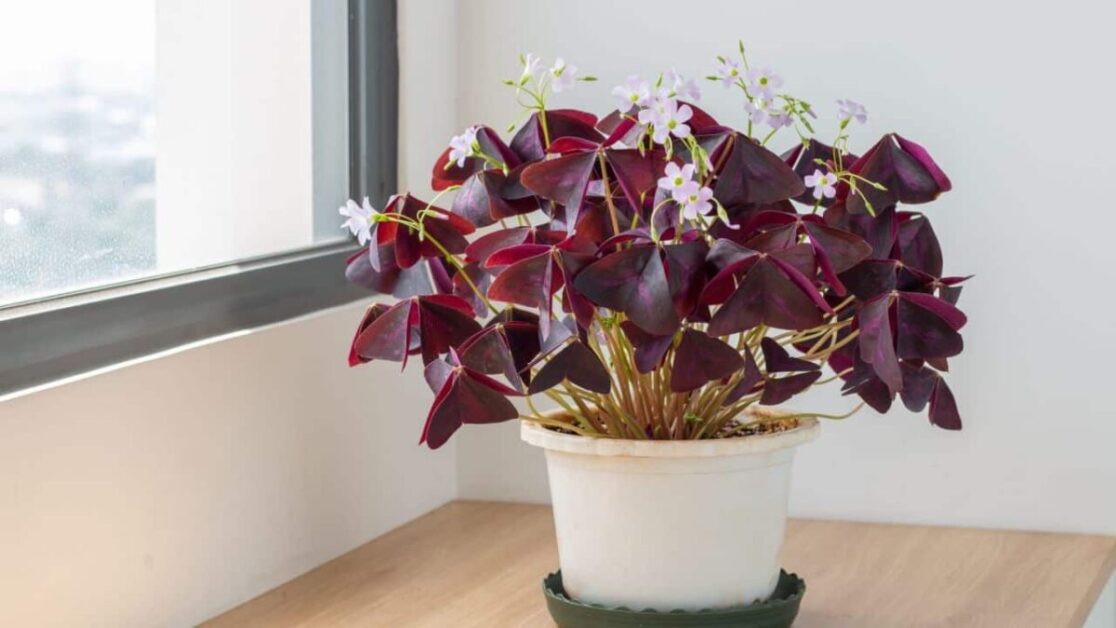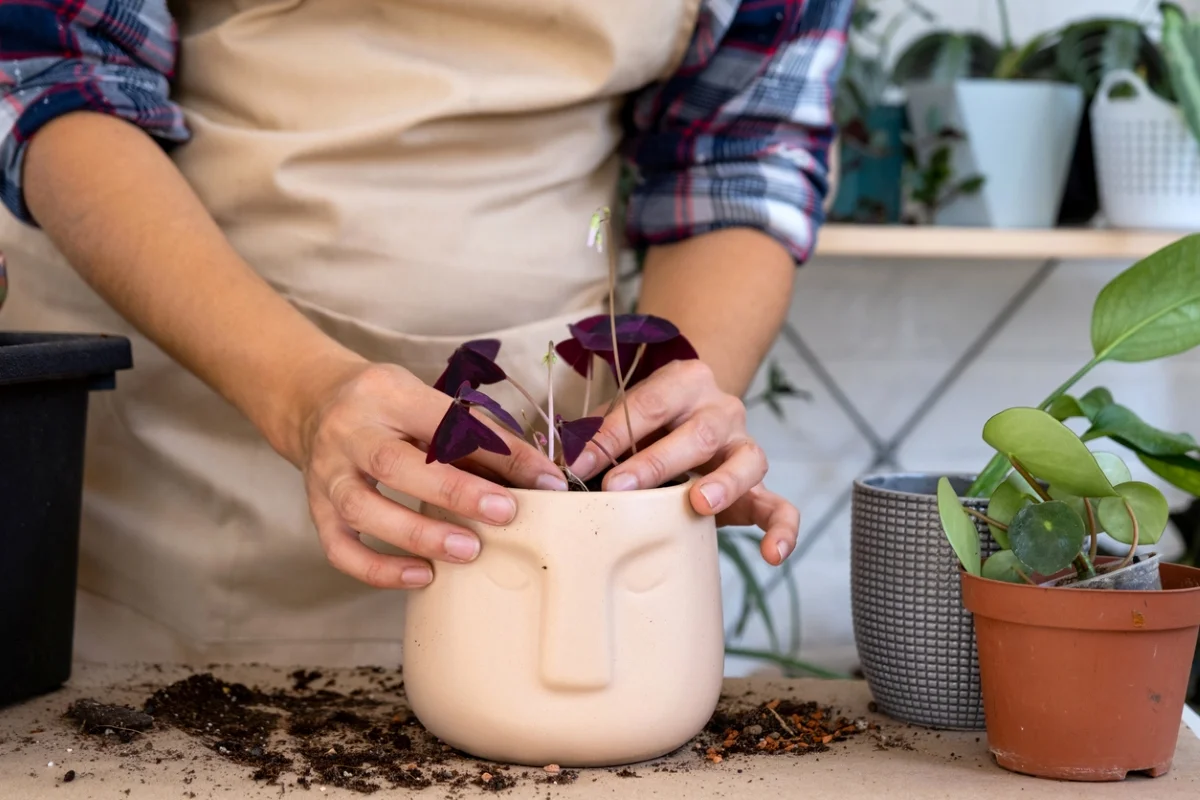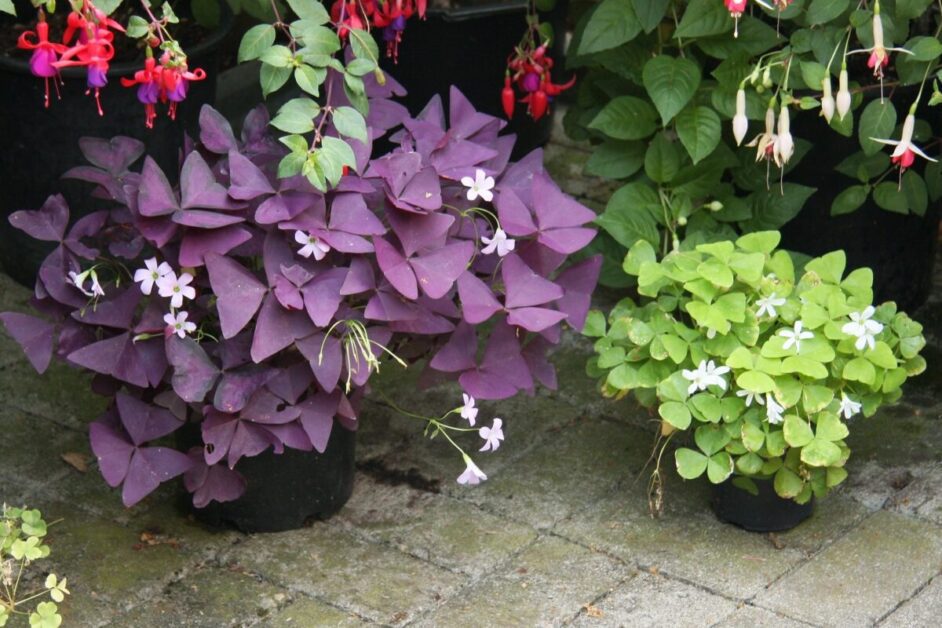Oxalis Triangularis Care: The Glorious False Shamrock
The Perfect Lighting Conditions for Oxalis Triangularis
For optimal growth and vibrancy, providing the perfect lighting conditions for your Oxalis Triangularis is crucial. This plant thrives in bright, indirect light. Placing it near a window where it can receive filtered sunlight for a few hours daily is ideal. Avoid exposing the plant to direct sunlight, as this can scorch the delicate foliage. Additionally, if the plant is not receiving enough light, it may become leggy and struggle to produce its characteristic triangular leaves.
Insufficient light can also lead to the plant failing to bloom or producing smaller, less vibrant flowers. As a rule of thumb, if you can comfortably read a book in the area where your Oxalis Triangularis is placed without the need for artificial lighting during the day, then the lighting conditions are likely suitable for its growth. Monitoring the plant’s response to its current location can help you make adjustments to ensure it thrives and remains healthy.
How to Water Your False Shamrock Plant
When it comes to watering your False Shamrock plant, it is crucial to strike a balance. Overwatering can lead to root rot, while underwatering can cause the leaves to wither and dry out. The key is to keep the soil consistently moist, but not waterlogged. Allow the top inch of soil to dry out slightly between watering sessions. Test the moisture level by sticking your finger into the soil – if it feels dry, it’s time to water.

A good rule of thumb is to water your False Shamrock plant once every 7-10 days, but this can vary depending on factors like humidity levels, temperature, and the size of the pot. During the growing season, which is typically spring and summer, you may find that your plant requires more frequent watering. In contrast, during the dormant season in fall and winter, you can reduce the frequency of watering to prevent waterlogged soil. Always use room temperature water to avoid shocking the plant’s roots.
Choosing the Right Soil for Your Oxalis Triangularis
Oxalis Triangularis, commonly known as the Purple Shamrock or False Shamrock, thrives best in a well-draining, slightly acidic soil mix. To create the ideal soil environment for your Oxalis Triangularis, consider blending equal parts of peat moss, perlite, and high-quality potting soil. The peat moss aids in moisture retention, while the perlite enhances drainage, allowing the roots to breathe and preventing waterlogged conditions that can lead to root rot.
Additionally, incorporating a small amount of sand or orchid bark into the soil mixture can further improve aeration and promote healthy root development for your Oxalis Triangularis. Remember that this plant prefers slightly acidic soil with a pH level around 6.0 to 6.8. Regularly monitoring the pH level of the soil using a simple test kit can help you adjust the acidity levels as needed to ensure your Oxalis Triangularis thrives in its growing medium.
Propagation Techniques for Oxalis Triangularis
To propagate Oxalis Triangularis successfully, you can utilize various methods such as division or planting bulbs. Division involves carefully separating the plant’s rhizomes or tubers to create new individual plants. Ensure that each division has healthy roots and shoots to ensure successful growth. Another technique is planting bulbs, where you can plant the small bulbs that form around the base of the parent plant into a suitable growing medium. These bulbs will develop into new plants over time, given the right conditions and care.
Propagation through division should be done during the plant’s active growing season, typically in spring or early summer, to promote faster root establishment and growth. When dividing the plant, use a sharp and clean knife to separate the rhizomes or tubers, making sure each division has enough root structure and foliage to support its growth. Plant these divisions in well-draining soil and keep them consistently moist until they establish themselves. For propagating through bulbs, plant them at a shallow depth in a suitable potting mix and keep the soil consistently moist until new growth emerges. With proper care and attention, your Oxalis Triangularis will thrive and propagate successfully through these techniques.
Common Pests and Diseases to Look Out For
Spider mites are a common pest that False Shamrock plants can fall prey to. These tiny arachnids can often be identified by the fine webbing they leave behind and the stippling they create on the leaves of the plant. To combat spider mites, regular inspection of the plant is essential, and if an infestation is detected, neem oil or insecticidal soap can be effective treatments.
Another issue that Oxalis Triangularis owners may encounter is the presence of aphids. These small, soft-bodied insects can cluster on the new growth of the plant, sucking out the sap and causing deformities in the foliage. One way to address aphids is by using a strong stream of water to wash them off the plant or applying horticultural oil to suffocate them. Regular pruning of affected plant parts can also help prevent the spread of aphids to other areas of the False Shamrock.
Here is a table that shows some of the pests and diseases of False Shamrock:
| Pest/Disease | Description |
|---|---|
| Aphids | Small, soft-bodied insects that feed on plant sap, causing wilting and deformation of leaves. |
| Spider Mites | Tiny pests that suck sap from plant tissues, leading to yellowing and stippling of leaves. |
| Whiteflies | Small, white insects that cluster on the undersides of leaves, sucking sap and causing yellowing and weakening of the plant. |
| Powdery Mildew | Fungal disease characterized by white powdery growth on leaves, which can hinder photosynthesis and weaken the plant. |
| Botrytis Blight | Fungal disease causing brown spots and fuzzy gray mold on leaves and stems, particularly in damp conditions. |
| Root Rot | Fungal disease affecting roots, often caused by overwatering or poorly drained soil, leading to wilting and plant death. |
Pruning and Maintenance Tips for Your False Shamrock
Pruning and maintenance are essential tasks to keep your False Shamrock plant thriving. Regularly pruning dead or yellowing leaves helps improve the plant’s overall appearance and health. Use clean, sharp scissors to carefully trim away any damaged or discolored foliage. Additionally, removing spent flowers can encourage the plant to focus its energy on new growth and blooms.
In terms of maintenance, it’s crucial to monitor the soil moisture levels and water your False Shamrock plant when the top inch of the soil feels dry to the touch. Overwatering can lead to root rot, so it’s advisable to err on the side of underwatering rather than overwatering. Providing adequate light, ideally filtered sunlight or bright indirect light, along with regular fertilization during the growing season, will contribute to a healthy and vibrant False Shamrock plant.
The Best Temperature Range for Oxalis Triangularis
Oxalis Triangularis, also known as the Purple Shamrock plant, thrives in a temperature range that mimics its native environment. Ideally, this plant prefers temperatures between 60°F and 75°F during the day and slightly cooler temperatures at night, ranging between 55°F and 65°F. Maintaining consistent temperatures within this range is crucial for the health and growth of your Oxalis Triangularis.

Extreme temperature fluctuations can stress the Purple Shamrock plant, leading to issues like leaf drop and hindered growth. Therefore, it’s essential to place your plant in a location where it can enjoy stable temperatures throughout the day and night. By keeping a close eye on the temperature conditions and providing a suitable environment for your Oxalis Triangularis, you can ensure its well-being and encourage vibrant growth and beautiful foliage display.
Fertilizing Schedule for a Healthy Plant
Proper fertilization is crucial for the healthy growth of your Oxalis Triangularis. To ensure your plant receives the necessary nutrients, a balanced fertilizer with an N-P-K ratio of 10-10-10 is recommended. Starting in the early spring, feed your False Shamrock every two weeks with a diluted liquid fertilizer to support its growth and blooming potential. Be cautious not to over-fertilize, as this can lead to nutrient burn and harm the delicate foliage of your plant.
During the winter months, reduce fertilization frequency to once a month as the plant’s growth slows down. Remember to always water your Oxalis Triangularis thoroughly after applying fertilizer to prevent any potential root damage. By following a consistent fertilizing schedule tailored to the specific needs of your False Shamrock, you can promote vibrant foliage and beautiful blooms throughout the year.
Repotting Your False Shamrock: When and How to Do It
When it comes to repotting your False Shamrock (Oxalis Triangularis), timing is crucial for the plant’s overall health and growth. Repotting should ideally be done in the spring when the plant is entering its active growing phase. Look for signs such as roots coming out of the drainage holes or the plant becoming root-bound in its current container, indicating that it’s time for a new home.
Choose a pot that is only slightly larger than the current one to prevent overpotting, which can lead to waterlogging and root rot. Ensure the new container has adequate drainage holes to prevent water from accumulating at the roots. When repotting, gently loosen the plant from its current pot, being careful not to damage the delicate roots. Place the False Shamrock in the new pot with fresh, well-draining soil, making sure the top of the root ball sits just below the rim of the pot. Water thoroughly after repotting to help the plant settle into its new home comfortably.

Creating Humidity for Your Oxalis Triangularis
To create the ideal humidity for your Oxalis Triangularis, you can employ simple methods that mimic its native environment. This plant thrives in moderate to high humidity levels, typically ranging from 50% to 70%. One effective way to increase humidity is by placing a pebble tray filled with water near your plant. As the water evaporates, it creates a humid microclimate around the plant, mimicking the conditions it prefers.
Another method to boost humidity is by using a room humidifier, especially during dry seasons or in areas with low humidity levels. By maintaining the right moisture levels in the air, you provide optimal conditions for your Oxalis Triangularis to flourish. Be cautious not to overwater the plant directly, as excessive moisture can lead to root rot and other issues. Finding the right balance in humidity levels will ensure your False Shamrock remains healthy and vibrant.
Training Your Oxalis Triangularis to Grow in a Certain Direction
To ensure your Oxalis Triangularis grows in the direction you desire, it’s important to employ strategic training techniques. By gently rotating the plant periodically, you can encourage even growth on all sides. This simple practice helps prevent lopsided or uneven development, promoting a healthier and more balanced plant overall.
Another effective method is using supports such as stakes or trellises to guide the growth of your Oxalis Triangularis. By gently tying the stems to these structures as they grow, you can influence the direction in which the plant expands. This approach not only allows you to control the shape and form of your Oxalis Triangularis but also adds an element of visual interest to your indoor garden space.
How to Identify and Treat Yellowing Leaves
Yellowing leaves on your Oxalis Triangularis can be a sign of various issues that need to be addressed promptly. One common cause of yellowing leaves is overwatering, which can lead to root rot and hinder the plant’s ability to absorb nutrients effectively. Ensure that your false shamrock plant is placed in well-draining soil and adjust your watering schedule accordingly to prevent waterlogged conditions.
Another culprit behind yellowing leaves could be inadequate light exposure. Oxalis Triangularis thrives in bright, indirect sunlight, so if your plant is not receiving sufficient light, its leaves may start to yellow. Consider moving your plant to a spot where it can receive more natural light or supplementing with grow lights to mimic the ideal lighting conditions for your false shamrock.
The table below shows the signs of the yellowing of leaves and their treatment of False Shamrock:
| Identification | Treatment |
|---|---|
| Leaves turn yellow, starting from the tips or edges | 1. Check watering: Ensure proper watering; False Shamrock prefers slightly moist soil. Adjust watering frequency as needed. Avoid overwatering. |
| Yellowing may progress inward towards the center of the leaf | 2. Sunlight: Ensure the plant receives adequate but not excessive sunlight. False Shamrock prefers bright, indirect light. |
| Other symptoms such as wilting or drooping may accompany yellowing | 3. Check soil: Ensure well-draining soil; consider repotting if soil is compacted or waterlogged. |
| 4. Fertilization: Apply a balanced fertilizer according to the plant’s needs, avoiding excess nitrogen which can cause leaf yellowing. | |
| 5. Pest and disease control: Check for pests such as aphids or diseases such as powdery mildew. Treat accordingly if present. | |
| 6. Trimming: Trim away severely yellowed or damaged leaves to encourage new growth. |
The Importance of Proper Air Circulation for False Shamrocks
Proper air circulation is crucial for the health and vitality of False Shamrocks (Oxalis Triangularis). These delicate plants thrive in environments with good air movement, which helps prevent the buildup of excess moisture around the foliage. Inadequate air circulation can lead to stagnant air pockets where fungal diseases can thrive, posing a risk to the overall well-being of your False Shamrock plant. By ensuring that the air around your plant can freely circulate, you can create a healthier microclimate that promotes growth and helps ward off potential issues.
In addition to reducing the risk of fungal diseases, adequate air circulation is also essential for optimizing photosynthesis in False Shamrocks. These plants require sufficient air movement to aid in the exchange of gases like carbon dioxide and oxygen, which are essential for their metabolic processes. By allowing for proper ventilation around your False Shamrock plant, you are supporting its ability to take in carbon dioxide and release oxygen during photosynthesis, which is critical for its growth and development.
Harvesting and Using the Edible Leaves of Oxalis Triangularis
Harvesting and using the edible leaves of Oxalis Triangularis can be a rewarding experience for plant enthusiasts looking to add a unique touch to their culinary endeavors. When it comes to harvesting these delicate leaves, it’s essential to choose ones that are healthy and vibrant in color. Gently plucking the outer leaves, taking care not to damage the plant, ensures a continuous supply of fresh foliage for consumption.
Once you have harvested the Oxalis Triangularis leaves, they can be used in a variety of ways in the kitchen. From adding a zesty tang to salads or sandwiches to incorporating them as a flavorful garnish on main dishes, these edible leaves provide a pop of freshness that elevates the overall dining experience. Whether eaten raw or lightly cooked, the distinct lemony flavor of Oxalis Triangularis leaves is sure to intrigue and delight the taste buds of those who appreciate experimenting with unconventional ingredients.
Watch the full video to learn more about cultivating False Shamrock.
How to Encourage Blooms on Your False Shamrock
To encourage blooms on your False Shamrock plant, also known as Oxalis Triangularis, it is important to provide the right conditions for optimal flower production. Adequate sunlight is crucial for the plant to bloom profusely. Place your Oxalis Triangularis in a location where it can receive bright, indirect light for most of the day. Avoid exposing it to direct sunlight, as this can scorch the delicate leaves and inhibit blooming.
In addition to light, proper watering is essential for stimulating blooming in your False Shamrock plant. Keep the soil consistently moist, but not waterlogged. Allow the top inch of the soil to dry out slightly between waterings to prevent root rot. Overwatering can lead to fungal issues and hinder the plant’s ability to produce flowers. By maintaining a balance of light and moisture, you can encourage your Oxalis Triangularis to bloom regularly and showcase its charming flowers.
How often should I fertilize my False Shamrock to encourage blooms?
Fertilize your False Shamrock every 4-6 weeks during the growing season with a balanced fertilizer to encourage blooms.
Can I use artificial grow lights to provide the perfect lighting conditions for my Oxalis Triangularis?
Yes, you can use artificial grow lights to supplement natural light for your False Shamrock and encourage blooms.
Are there any specific pruning techniques I should follow to encourage blooming on my False Shamrock?
Prune back any leggy or overgrown stems on your False Shamrock to promote new growth and encourage blooms.
Will misting my Oxalis Triangularis help encourage blooms?
Misting your False Shamrock can help create humidity, which may encourage blooms, but be careful not to overdo it as too much moisture can lead to pests and diseases.
How long does it typically take for a False Shamrock to bloom?
It can take several weeks to a few months for a False Shamrock to bloom, depending on the plant’s overall health and growing conditions.








